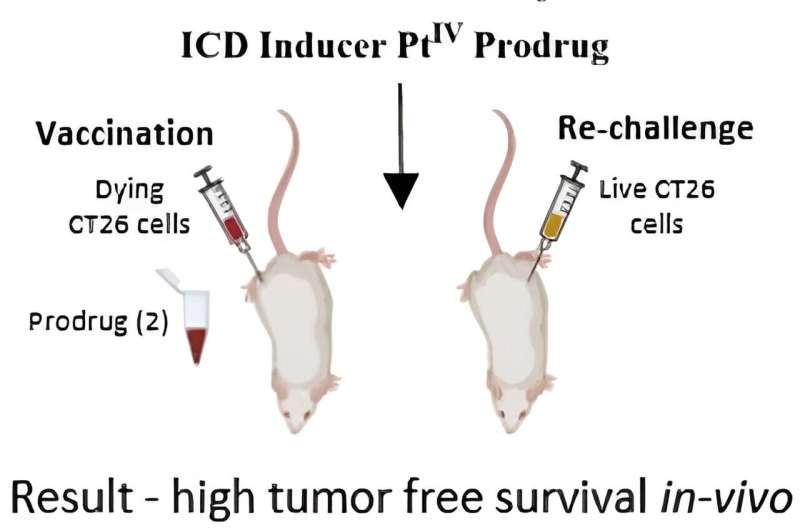This article has been reviewed according to Science X's editorial process and policies. Editors have highlighted the following attributes while ensuring the content's credibility:
fact-checked
peer-reviewed publication
trusted source
proofread
Combining potent cancer drugs in a single multitargeting molecule

To give cancer treatments the greatest possible chance of success, patients are often treated with multiple drugs that attack the cancer using different mechanisms. A team of researchers has now combined three highly potent drugs in a single multitargeting prodrug that is activated in the tumor cells. As the team report in the journal Angewandte Chemie International Edition, their prodrug was more effective, and caused fewer side effects in mice, than the drugs alone or in a mixture.
Modern cancer treatments take a number of different routes to fight cancer, often employing a cocktail of drugs to improve the chances of success. However, the human body is not suited to receiving so many drugs at once, and unpleasant, even life-altering side effects are synonymous with cancer treatment.
To reduce the burden on patients' bodies, the research teams led by Dan Gibson from the Hebrew University of Jerusalem, Israel, and Victor Brabec from the Czech Academy of Sciences in Brno, Czech Republic, have joined a number of cancer drugs in a single prodrug. "When combined in a single prodrug, there is only one pharmacokinetic behavior and a different toxicity profile," Gibson says.
The three drugs chosen by the team, gemcitabine, oxaliplatin, and doxorubicin, are all proven cancer drugs. The drugs work by damaging cancer cells' DNA using different mechanisms, preventing the cells from reproducing and, in addition, stimulating the patient's own immune response to attack the cancer cells. "We aim to prepare platinum-based prodrugs that release two or three FDA-approved drugs that are used together to treat a given indication," Gibson says.
Two self-immolative linker types were used to link the platinum-containing oxaliplatin to the other organic prodrugs, where "self-immolative" means that the linkers will self-destruct under the right conditions. The selected linker types of the multitargeting prodrug were broken down to activate the drugs by the reducing environment found in tumor cells.
In cell and animal models, the team's combination drug proved considerably more effective than the drugs on their own or in a mixture. Side effects were also reduced, with increased selectivity for cancer cells meaning less healthy cells were damaged. The team believe that a large part of this success was due to the linkers they used in their multitargeting prodrug.
"The impressive biological activity can be attributed to the proper design of the self-immolating linkers connecting the three drugs that facilitate the release of the drugs in their active form, thereby exploiting the best properties of the individual drugs," they stated.
More information: Amrita Sarkar et al, Multitargeting Prodrugs that Release Oxaliplatin, Doxorubicin and Gemcitabine are Potent Inhibitors of Tumor Growth and Effective Inducers of Immunogenic Cell Death, Angewandte Chemie International Edition (2023). DOI: 10.1002/anie.202310774



















